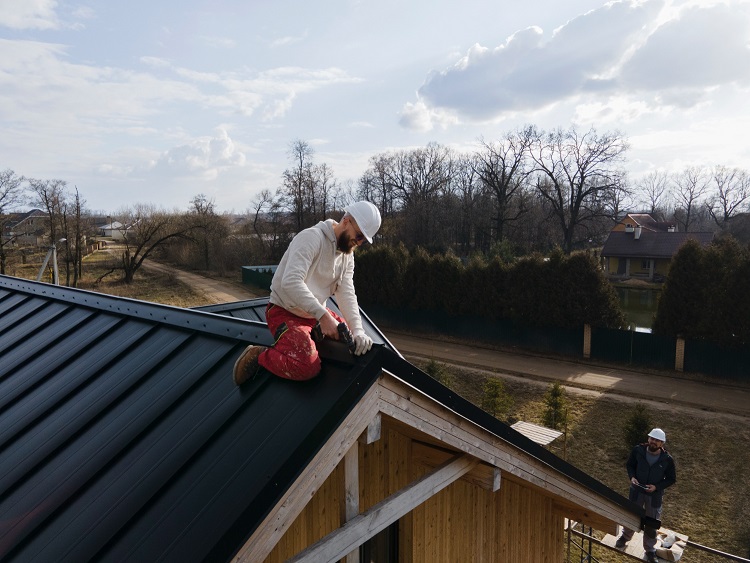Winter is a season often associated with hot cocoa, cozy blankets, and snow-covered landscapes. However, for homeowners facing roofing issues, the season can be a time of concern. A common question many ask is, “Can we replace our home’s roof in the winter?” The answer, while not straightforward, can be understood by delving into the technical aspects, from material behavior in cold temperatures to the effect of cold on the installation process.
Material Behavior In Cold Temperatures
The performance and pliability of roofing materials can alter considerably in cold conditions:
1.Asphalt Shingles: Widely used in many homes, asphalt shingles can become exceedingly brittle when temperatures drop. This brittleness poses significant risks during installation. For instance, hammering nails or even just handling can cause them to shatter or crack. Proper handling and perhaps warming the shingles slightly can mitigate this risk, but it does require extra caution.
2.Metal Roofs: Cold temperatures cause metal to contract. While this contraction might be minimal, even a slight change in size can affect the fit of interlocking panels. Installers need to be mindful of this and adjust accordingly. Additionally, the contraction and expansion cycle can lead to ‘oil canning’ or visible waviness in metal roofs if not accounted for during installation.
3.EPDM (Rubber) Roofing: Used predominantly for flat roofs, EPDM tends to lose its elasticity in cold weather. This means that when it’s being unrolled and applied, there’s a higher risk of wrinkling or not lying perfectly flat. It also might require more time to relax and settle onto the roof structure.
Adhesive Properties
The efficiency of adhesives can be diminished in cold climates:
1.Self-adhering Membranes: These are often applied beneath shingles or used for flat roofs. Their stickiness is compromised when it’s cold, making them less effective. It’s possible to use adhesive promoters or other methods, but these can add to the overall cost and labor time.
2.Roofing Tar and Sealants: In cold conditions, these materials lose their fluidity. While this might not stop them from acting as a barrier, it does make them harder to apply evenly. Specialized equipment or additives might be needed to ensure these materials remain pliable during application.
Installation Process In Cold Weather
Carrying out a roofing project in the winter has its unique set of challenges:
1.Safety: The risk profile of a roofing job increases dramatically in winter. Ice, snow, and even morning frost can make rooftops treacherous. It’s essential for crews to use additional safety equipment like anti-slip footwear and to clear the work area of ice and snow before starting.
2.Tools: Many roofing tools, especially pneumatic ones, might malfunction in colder temperatures. Compressors can freeze, reducing their efficiency, and cold tools can jam or work less efficiently. Some equipment might need additional maintenance checks during the day.
3.Efficiency: Physical tasks in cold conditions can become strenuous. The cold can slow down reflexes, and even simple tasks can become cumbersome with thick gloves. As a result, the time needed to complete a job can increase, possibly affecting labor costs.
To ensure a smooth winter roofing installation, one should be mindful of these intricacies, plan meticulously, and be prepared to make real-time decisions based on the prevailing conditions.
Potential Benefits Of Winter Roofing
While there are challenges, some benefits might make a winter roof replacement appealing:
1.Contractor Availability: Most homeowners schedule roofing jobs during spring or summer. Consequently, contractors might have more availability during winter, and you could get your job done faster.
2.Potential Cost Savings: Some contractors offer off-season discounts to keep their crews busy during the winter.
Precautions for a Successful Winter Roof Replacement
If you decide to proceed with a winter roof replacement, consider the following precautions:
1.Choose the Right Contractor: Ensure your contractor has experience with winter installations. They should be aware of the challenges and best practices for winter roofing.
2.Monitor Weather Forecasts: Try to choose a stretch of days with milder temperatures and clear skies.
3.Use Appropriate Materials: Some modern roofing materials are designed to cope with cold weather installations. Discuss these options with your contractor.
4.Ensure Proper Sealing: Double-check all seals, especially if using materials that might be less adhesive in the cold.
5.Safety First: Ensure the crew follows safety protocols, uses safety equipment, and takes regular breaks to warm up.
Replacing your home’s roof in the winter is not impossible, but it does come with unique challenges. Understanding the technical aspects and ensuring you and Seattle Roofers are prepared can make the process smoother and more efficient. If your roof is in dire need of replacement and cannot wait for warmer weather, take the necessary precautions and move forward with confidence. However, if it’s a choice between convenience and necessity, weigh the pros and cons to make an informed decision that ensures the longevity and integrity of your new roof.

Recent Comments